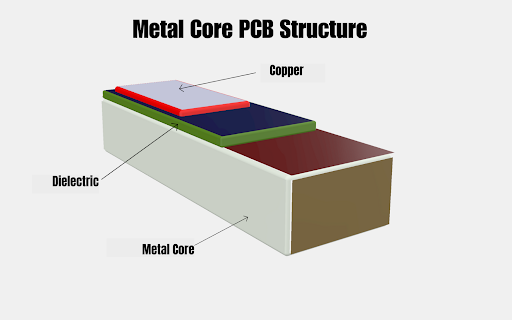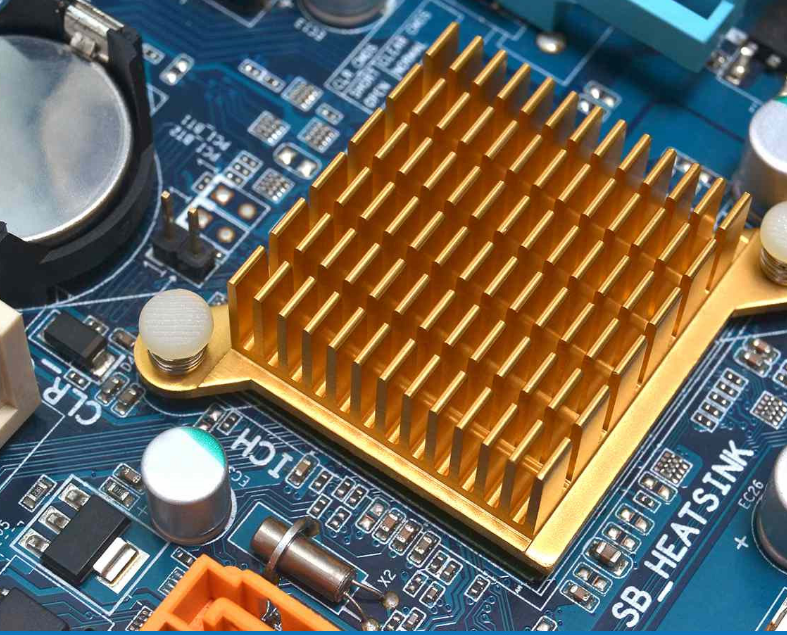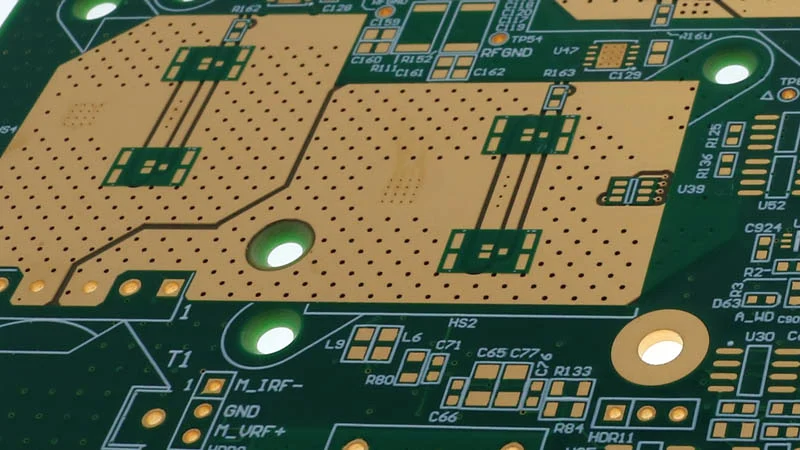In the world of electronics, managing heat is critical to ensuring the reliability and performance of printed circuit boards (PCBs). High-Tg PCBs, known for their high glass transition temperature, are a go-to solution for applications that demand superior thermal stability. But how do High-Tg PCBs enhance thermal performance, and what design strategies can you use to maximize their effectiveness? This blog dives deep into achieving optimal thermal performance with High-Tg PCBs, covering key aspects like thermal conductivity, heat dissipation, thermal vias, heatsink design, and thermal analysis.
Whether you're designing for high-power electronics or harsh environments, understanding how to leverage the properties of High-Tg materials can make a significant difference. Let’s explore the essential techniques and considerations to ensure your PCB design excels in thermal management.
What Are High-Tg PCBs and Why Do They Matter for Thermal Performance?
High-Tg PCBs are made from materials with a higher glass transition temperature (Tg), typically above 170°C, compared to standard FR-4 materials with a Tg of around 130°C. The glass transition temperature is the point at which a PCB material shifts from a rigid to a more flexible state. A higher Tg means the board can withstand greater heat without deforming or losing structural integrity.
This property is vital for thermal performance because it allows High-Tg PCBs to operate reliably in high-temperature environments, such as automotive systems, industrial equipment, and aerospace applications. These boards resist thermal stress, prevent delamination, and maintain electrical performance even under intense heat. For engineers working on designs that generate significant heat or operate in extreme conditions, High-Tg materials provide a robust foundation for thermal management.
High-Tg PCB Thermal Conductivity: The Foundation of Heat Management
Thermal conductivity measures how well a material transfers heat. In High-Tg PCBs, the choice of substrate material plays a big role in determining thermal conductivity. While standard FR-4 has a thermal conductivity of about 0.3 W/m·K, High-Tg materials, especially those blended with advanced composites or ceramics, can achieve values closer to 0.6–1.0 W/m·K. Though this is still lower than metal-core PCBs (which can exceed 100 W/m·K), it’s a significant improvement for multilayer designs that rely on dielectric layers.
Better thermal conductivity in High-Tg PCBs means heat spreads more evenly across the board, reducing hotspots that can damage components. To maximize this, consider using thinner dielectric layers in your design to shorten the heat transfer path. Additionally, pairing High-Tg materials with copper planes can enhance heat distribution since copper offers a thermal conductivity of around 400 W/m·K.

High-Tg PCB Heat Dissipation: Strategies for Effective Cooling
Heat dissipation is the process of moving heat away from critical components to prevent overheating. High-Tg PCBs support better heat dissipation due to their ability to handle higher temperatures without degrading. However, material alone isn’t enough—design plays a crucial role.
One effective strategy is to maximize the surface area for heat to escape. This can be done by using larger copper areas on the PCB surface as heat spreaders. For example, a design with a 2 oz. copper layer (70 μm thick) can dissipate heat more effectively than a 1 oz. layer (35 μm thick) because of the increased thermal mass. Additionally, placing heat-generating components away from each other prevents localized heat buildup.
Another approach is incorporating active cooling solutions like fans or passive methods like natural convection. High-Tg PCBs are particularly suited for these setups because they maintain stability even when exposed to fluctuating thermal loads. For instance, in a power supply design operating at 85°C ambient temperature, a High-Tg board ensures the material doesn’t soften or warp under heat stress.

High-Tg PCB Thermal Vias: Enhancing Heat Transfer
Thermal vias are small, plated holes in a PCB that create a direct path for heat to move from one layer to another, often connecting heat-generating components to a ground plane or heatsink. In High-Tg PCBs, thermal vias are especially effective because the material can withstand the thermal cycling that occurs during operation without cracking or delaminating.
To optimize thermal vias, consider their placement and density. A common practice is to place an array of vias directly beneath high-power components like power ICs or LEDs. For example, a 5x5 grid of vias with a diameter of 0.3 mm and a pitch of 1.0 mm can significantly reduce thermal resistance. Studies suggest that thermal vias can lower component junction temperatures by up to 10-15°C in high-power designs.
However, avoid overusing vias as they can increase manufacturing costs and potentially interfere with signal integrity in high-frequency designs. Balancing the number and size of vias with the board’s thermal needs is key. High-Tg materials support this balance by providing a stable base that resists stress from thermal expansion.

High-Tg PCB Heatsink Design: Maximizing Cooling Efficiency
Heatsinks are external components attached to a PCB or directly to heat-generating devices to absorb and dissipate heat. When paired with High-Tg PCBs, heatsinks become even more effective because the board material can handle the elevated temperatures at the mounting interface without degrading.
For optimal heatsink design, focus on material and geometry. Aluminum heatsinks, with a thermal conductivity of about 200 W/m·K, are a popular choice due to their cost-effectiveness and lightweight nature. The geometry should maximize surface area—fin structures are common, with fin heights and spacing tailored to the airflow conditions. For instance, a heatsink with 10 fins spaced 2 mm apart can increase heat dissipation by 30% compared to a flat plate under natural convection.
Attachment is another critical factor. Using thermal interface materials (TIMs) like thermal paste or pads between the heatsink and PCB ensures efficient heat transfer. High-Tg PCBs are ideal here because they resist warping during heatsink mounting, maintaining a consistent contact surface. Ensure the heatsink is aligned with thermal vias or copper planes on the PCB for a direct heat path.
High-Tg PCB Thermal Analysis: Simulating for Success
Thermal analysis is the process of simulating and evaluating how heat flows through a PCB design. For High-Tg PCBs, thermal analysis is essential to predict performance under real-world conditions and identify potential issues before manufacturing. Modern design software allows engineers to model heat distribution, component temperatures, and cooling efficiency with high accuracy.
Start by defining the thermal boundary conditions, such as ambient temperature (e.g., 25°C for room conditions or 85°C for automotive applications) and power dissipation of components (e.g., a power IC dissipating 5 W). High-Tg materials should be modeled with their specific thermal conductivity and Tg values to ensure realistic results. For instance, a simulation might reveal that a hotspot reaches 120°C, well within the safe operating range of a High-Tg board with a Tg of 180°C.
Thermal analysis also helps optimize the placement of thermal vias and heatsinks. By running multiple simulations, you can compare designs—for example, testing whether increasing via density from 10 to 20 under a component reduces junction temperature by more than 5°C. This data-driven approach ensures your High-Tg PCB achieves peak thermal performance.
Practical Tips for Designing High-Tg PCBs for Thermal Performance
Now that we’ve covered the core aspects of thermal management with High-Tg PCBs, here are some actionable tips to apply in your designs:
- Choose the Right Material: Select a High-Tg material with a Tg at least 20-30°C above your maximum operating temperature to ensure reliability.
- Optimize Copper Usage: Use thicker copper layers (e.g., 2 oz. or higher) for better heat spreading, especially in power-heavy areas.
- Strategize Component Placement: Spread out heat-generating components and avoid clustering them in one area to minimize hotspots.
- Leverage Thermal Vias: Place vias strategically under high-power components, ensuring they connect to a ground plane or heatsink for maximum heat transfer.
- Simulate Early and Often: Use thermal analysis tools during the design phase to catch potential issues before prototyping.
By integrating these practices, you can fully harness the thermal advantages of High-Tg PCBs and create designs that perform reliably under demanding conditions.
Benefits of High-Tg PCBs Beyond Thermal Performance
While thermal management is a primary reason to choose High-Tg PCBs, they offer additional advantages that enhance overall design quality. These include:
- Improved Mechanical Strength: High-Tg materials resist bending and cracking, making them ideal for rugged applications.
- Better Chemical Resistance: They withstand exposure to harsh chemicals, which is crucial in industrial settings.
- Enhanced Multilayer Performance: High-Tg PCBs support complex multilayer designs without risking delamination during high-temperature soldering processes like reflow at 260°C.
These benefits make High-Tg PCBs a versatile choice for engineers tackling challenging projects where reliability is non-negotiable.
Conclusion: Unlocking the Full Potential of High-Tg PCBs
Achieving optimal thermal performance with High-Tg PCBs is a multifaceted process that involves understanding thermal conductivity, enhancing heat dissipation, utilizing thermal vias, designing effective heatsinks, and conducting thorough thermal analysis. By leveraging the unique properties of High-Tg materials and applying strategic design techniques, you can create PCBs that excel in high-temperature environments and deliver consistent performance.
From automotive to aerospace, the demand for robust thermal management solutions continues to grow. High-Tg PCBs stand out as a reliable foundation for meeting these challenges. With careful planning and the right design tools, you can ensure your next project not only meets but exceeds thermal performance expectations.
At ALLPCB, we’re committed to supporting your design journey with high-quality materials and manufacturing expertise. Whether you’re exploring High-Tg options or refining your thermal management strategy, our team is ready to help you bring your vision to life.
 ALLPCB
ALLPCB







